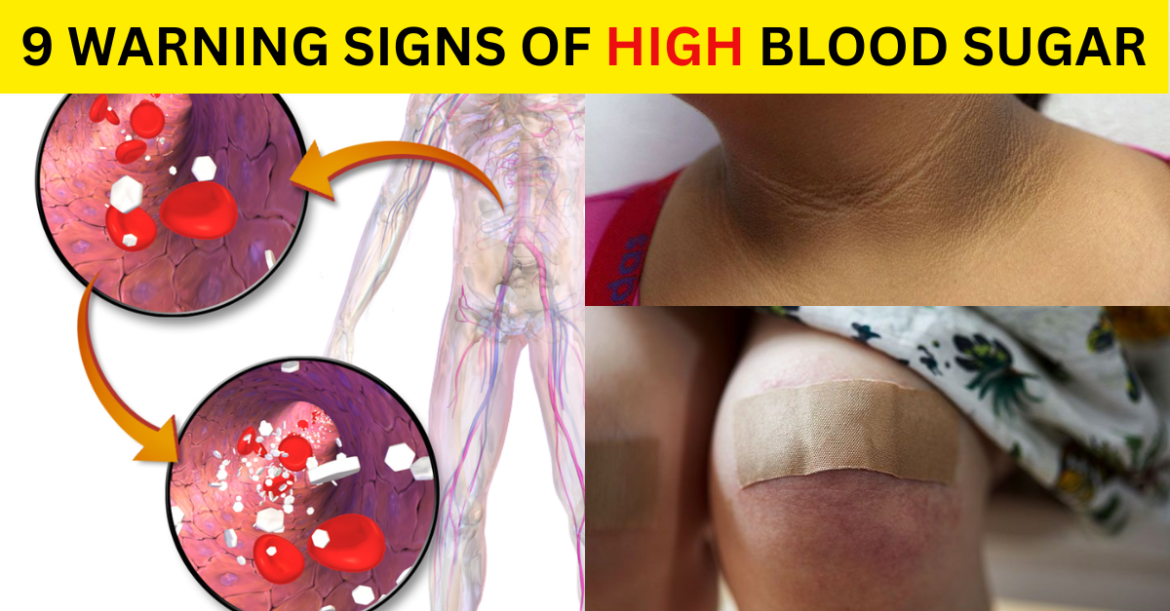Diabetes is becoming an epidemic, especially in the United States. According to recent statistics, over 29 million Americans have diabetes, and about one in three are at risk of developing symptoms at some point in their life. Even more concerning, 86 million people are prediabetic, with 30 percent likely to develop type 2 diabetes within five years.
What’s even scarier? Many people don’t know they have it. A third of diabetics remain undiagnosed. That’s why it’s crucial to recognize the symptoms early, as there are natural ways to manage and even reverse this condition.
Diabetes occurs when the body struggles to regulate insulin, leading to elevated blood glucose levels. Type 2 diabetes, the most common form, happens when the body either doesn’t produce enough insulin or becomes resistant to it, especially after consuming foods high in carbs, sugars, and unhealthy fats.
(We recommend you check this post as well: Why a Plant-Based Diet is the Key to Better Health and Longevity)
Insulin helps transport glucose from the bloodstream to cells, providing muscles with energy, improving brain function, and more. As blood sugar drops, the pancreas usually reduces insulin production, but in diabetic conditions, this process malfunctions.
Type 1 diabetes symptoms usually appear earlier in life, while type 2 symptoms can develop more gradually. Pregnant women may also experience gestational diabetes, which tends to go away after childbirth.
Understanding Diabetes Types:
- Pre-diabetes: Early-stage insulin resistance, usually diagnosed with fasting blood sugar levels between 100-125 mg/dL. Simple lifestyle changes like a healthier diet and regular exercise can reverse prediabetes.
- Metabolic Syndrome: This occurs when insulin resistance worsens, leading to high blood sugar, increased body fat (especially around the abdomen), and elevated blood pressure.
- Type 1 Diabetes: Typically diagnosed before age 20, type 1 is an autoimmune disease where the immune system destroys insulin-producing cells in the pancreas. If untreated, it can lead to serious complications, including hyperglycemic coma.
- Type 2 Diabetes: This form is characterized by insulin resistance, where the body struggles to use insulin properly. It’s often linked to a diet high in sugars and processed foods. Unlike type 1, it can be managed or even reversed with lifestyle changes.
Risk Factors for Type 2 Diabetes:
- Sedentary lifestyle
- Family history of diabetes
- Age 45 or older
- Being overweight or obese
- Hormonal imbalances like polycystic ovary syndrome
- Certain ethnic backgrounds
- History of heart disease or high blood pressure
If left untreated, diabetes can damage the nervous system, heart, blood vessels, organs, and eyes, increasing the risk of serious complications like heart disease and vision loss.
Common Symptoms of High Blood Sugar:
- Blurred Vision
- Excessive Thirst and Dry Mouth
- Sudden Appetite Changes
- Fatigue and Mood Swings
- Heavy Breathing
- Numbness or Pain in Hands and Feet
- Slow Healing Wounds
- Unexplained Weight Loss
- Loss of Consciousness
Type 2 diabetes symptoms may develop more slowly, but other signs to look out for include weight gain, dry skin, sexual dysfunction, frequent infections, and tingling in the extremities.
Diabetes Complications and Nerve Damage (Neuropathy):
Up to half of people with diabetes experience nerve damage, particularly in the feet and hands. Symptoms include muscle pain, weakness, tingling, and burning sensations. Diabetes can also affect sleep and cause changes in heart rate, perspiration, and sexual function.
Eye-Related Diabetes Symptoms:
Diabetes often leads to vision issues, including:
- Glaucoma
- Cataracts
- Vision loss
- Diabetic retinopathy
- Nerve damage
- Macular degeneration
Skin-Related Symptoms:
People with diabetes may experience slow wound healing, skin infections, itching, and dryness. Common skin problems include:
- Acne and rashes
- Fungal infections
- Blisters and scales
- Bacterial infections
- Folliculitis (hair follicle infections)
Natural Ways to Manage High Blood Sugar and Prevent Diabetes
The good news? Diabetes, especially type 2, can be managed with lifestyle changes. Many people have successfully reversed it by improving their diet, reducing stress, getting more exercise, and better managing their sleep.
Here are some key tips for managing diabetes:
- Regular Checkups: Early detection is critical. Regular checkups can help monitor blood sugar levels, blood pressure, weight, and overall health.
- Control Blood Sugar: Managing your blood sugar can prevent nerve damage. Digestive supplements like probiotics and magnesium can help, as well as stress reduction and a healthier diet.
- Balanced Diet & Exercise: A healthy diet full of whole, unprocessed foods and regular physical activity are essential for managing diabetes. Avoid sugar, processed grains, and unhealthy fats.
- Protect Your Eyes: Get your eyes checked regularly to avoid complications like glaucoma or cataracts. If vision damage occurs, lens transplants may be necessary.
- Improve Skin Health: To avoid infections and skin problems, maintain good hygiene, control your blood sugar, and use natural remedies like essential oils for skin care.
See also: Homemade Cinnamon Remedy for Lowering Blood Sugar and Cholesterol






